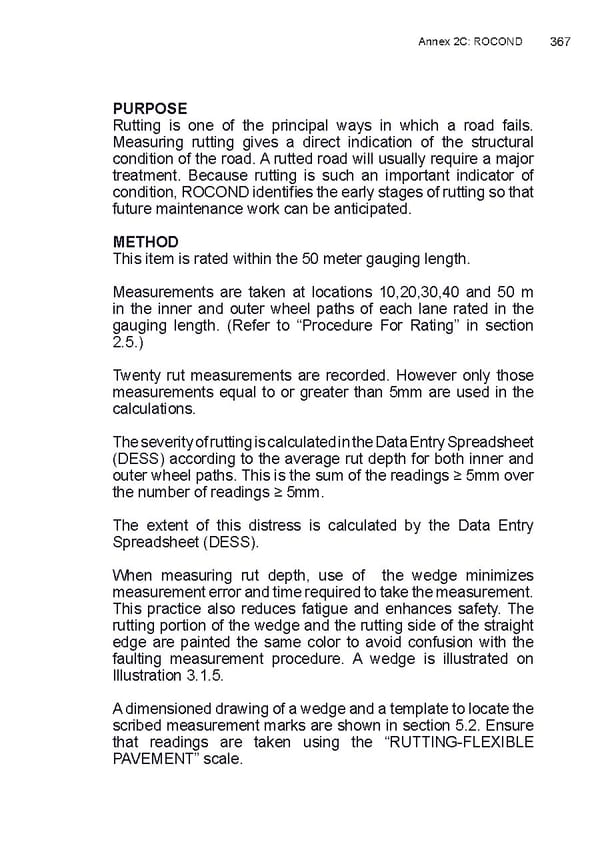Annex 2C: ROCOND 367 PURPOSE Rutting is one of the principal ways in which a road fails. Measuring rutting gives a direct indication of the structural condition of the road. A rutted road will usually require a major treatment. Because rutting is such an important indicator of condition, ROCOND identifies the early stages of rutting so that future maintenance work can be anticipated. METHOD This item is rated within the 50 meter gauging length. Measurements are taken at locations 10,20,30,40 and 50 m in the inner and outer wheel paths of each lane rated in the gauging length. (Refer to “Procedure For Rating” in section 2.5.) Twenty rut measurements are recorded. However only those measurements equal to or greater than 5mm are used in the calculations. The severity of rutting is calculated in the Data Entry Spreadsheet (DESS) according to the average rut depth for both inner and outer wheel paths. This is the sum of the readings ≥ 5mm over the number of readings ≥ 5mm. The extent of this distress is calculated by the Data Entry Spreadsheet (DESS). When measuring rut depth, use of the wedge minimizes measurement error and time required to take the measurement. This practice also reduces fatigue and enhances safety. The rutting portion of the wedge and the rutting side of the straight edge are painted the same color to avoid confusion with the faulting measurement procedure. A wedge is illustrated on Illustration 3.1.5. A dimensioned drawing of a wedge and a template to locate the scribed measurement marks are shown in section 5.2. Ensure that readings are taken using the “RUTTING-FLEXIBLE PAVEMENT” scale.
 Local Road Management Manual Page 367 Page 369
Local Road Management Manual Page 367 Page 369